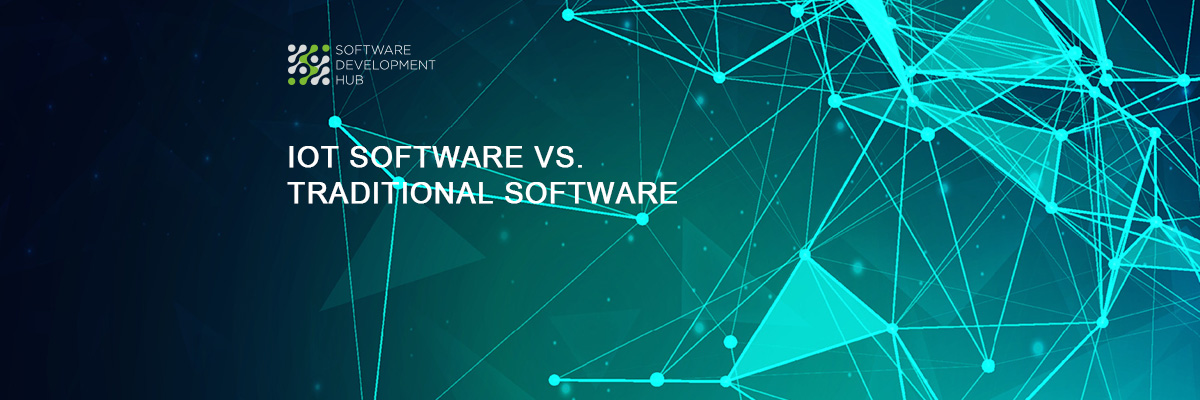Enterprise AI Integration with MCP: Challenges and Solutions
Enterprise AI Integration with MCP presents both significant opportunities and complex implementation challenges for development teams across industries. Integration of AI systems into existing business operations remains one of the most persistent problems facing enterprise developers. The "NxM problem" - where connecting M different AI models to N distinct tools creates exponential integration complexity - has created substantial bottlenecks until the Model Context Protocol (MCP) emerged as a viable solution.
Why has MCP gained such rapid adoption in enterprise environments? The numbers speak to genuine utility: 6.7 million users download the TypeScript MCP SDK weekly, while over 9 million developers download the Python SDK. Currently, there are over 16,000 active MCP servers with new ones created daily. This adoption pattern reflects MCP's practical approach to providing a unified protocol that connects LLMs to external systems through standardized interfaces including tools, resources, and prompts. MCP offers a structured, permission-aware interface that allows models to query systems like file storage, CRM, ticketing, and analytics. For enterprise AI solutions, this addresses fundamental scalability challenges that have prevented organizations from expanding their AI initiatives.
We will examine how MCP addresses enterprise integration bottlenecks, analyze real-world implementation challenges, and outline practical solutions for secure, scalable deployment. Whether you are initiating AI integration projects or optimizing existing systems, understanding the MCP ecosystem has become essential for effective enterprise development.
Understanding MCP in the Context of Enterprise AI
The Model Context Protocol (MCP) functions as a standardized communication layer that facilitates direct interactions between AI models and enterprise data sources. What distinguishes MCP from conventional integration approaches? MCP creates a universal interface that enables language models to discover and interact with external systems dynamically, rather than requiring predetermined configurations.
MCP vs Traditional API Integrations
How do traditional APIs compare to MCP in practical enterprise scenarios? APIs were designed for general software-to-software communication, not specifically optimized for AI interactions. MCP was built from the ground up with language models as the primary consideration.
|
Aspect |
Traditional APIs |
Model Context Protocol |
|
Discovery |
Requires pre-defined documentation |
Supports runtime capability discovery |
|
Standardization |
Each API differs in format and auth |
Uniform protocol across all integrations |
|
Adaptability |
Breaks if endpoints change |
Adapts to new capabilities automatically |
|
Context Handling |
Stateless by design |
Maintains context across interactions |
Traditional APIs require AI systems to know endpoints in advance, necessitating custom code for each integration. MCP reverses this model—servers advertise available capabilities, allowing AI models to discover them during runtime.
How MCP Solves the M×N Integration Problem
Enterprise AI implementations face what industry professionals call the "M×N integration problem." This describes the exponential complexity of connecting M different AI models to N distinct tools or data sources, resulting in M×N custom integrations to build and maintain.
MCP addresses this challenge by reducing complexity from M×N to M+N. Rather than creating separate connectors for each AI-to-tool combination:
- Each AI application connects to MCP once (M connections)
- Each tool or data source implements one MCP server (N connections)
- Total: M+N rather than M×N integrations
Consider connecting 5 AI models to 5 internal systems. Traditional approaches require 25 separate integrations. With MCP, this reduces to just 10 connections (5 + 5), representing a 60% reduction in complexity.
Core Components: Host, Client, Server
The MCP architecture consists of three primary components with distinct roles:
Host: The user-facing AI application that manages interactions and orchestrates overall flow. Examples include Claude Desktop, AI-enhanced IDEs, or custom enterprise AI solutions. Hosts initiate connections and render results to users.
Client: Functions as an intermediary between host and server, maintaining a 1:1 connection with each server. Clients handle protocol-level communication, validate messages according to JSON-RPC 2.0 specification, and provide feedback about active servers.
Server: A lightweight program that exposes specific functionalities to AI models through the standardized interface. Servers provide three types of capabilities:
- Tools: Functions that perform actions (e.g., creating database records)
- Resources: Read-only data endpoints (e.g., retrieving documents or database records)
- Prompts: Reusable templates that standardize AI interactions
This modular architecture enables progressive scaling—a single host can connect to multiple servers simultaneously, and new servers can be added without requiring changes to existing components. The separation of responsibilities ensures clean boundaries between user interaction, communication protocols, and actual tool execution.
Enterprise Use Cases of MCP Integration
Leading enterprises have begun implementing MCP integration in their AI systems with measurable results. The following cases illustrate how organizations across different industries apply MCP to address complex operational challenges and improve productivity metrics.
Block's Internal Agent Goose for Engineering Workflows
Block (the company behind Square and Cash App) developed an internal AI agent called Goose that operates on MCP architecture. This tool functions as both a desktop application and command-line interface, providing their engineering teams access to various MCP servers. Block's approach stands out due to their decision to build all MCP servers in-house rather than relying on third-party options, which provides complete control over security and enables custom integration with their specific workflows.
Goose applications extend well beyond basic coding tasks:
- Engineering teams employ it to refactor legacy software, migrate databases, run unit tests, and automate repetitive coding tasks
- Design, product, and customer support teams utilize Goose to generate documentation, process tickets, and build prototypes
- Data teams rely on it to connect with internal systems and extract context from company resources
The business impact has been substantial, with thousands of Block employees using Goose to reduce time spent on daily engineering tasks by up to 75%. Dhanji Prasanna, CTO of Block, noted that "Making goose open source creates a framework for new heights of invention and growth. Block engineers are already using goose to free up time for more impactful work".
Bloomberg's AI Productivity Acceleration
Bloomberg's AI infrastructure team identified what they termed the "productionization gap"—while teams could build impressive AI demos quickly, getting them production-ready for clients took substantially longer. Sambhav Kothari, Head of AI Productivity in Bloomberg's AI Engineering group, and his team hypothesized that a protocol-based system for tool integration would solve this challenge.
When Anthropic introduced MCP in late 2024, Bloomberg aligned their internal approach with this open standard. Their implementation is remote-first and multi-tenant, with robust identity awareness and middleware that handles access control and observability. Bloomberg's MCP infrastructure provides the missing middleware layer that includes systems for authentication, authorization, rate limiting, and AI guardrails.
The results proved dramatic: MCP adoption reduced time-to-production for new AI agents from days to minutes. The implementation also created a flywheel effect where the creation of new tools and agents reinforces and accelerates further development.
Amazon's API-First Culture and MCP Adoption
Amazon's path toward MCP began with Jeff Bezos' "API mandate" in 2002, which required all teams to expose their data and functionality through service interfaces. This early commitment to API-first development created an ideal foundation for MCP adoption.
Amazon is moving steadily toward a true "MCP-first" approach. A current Amazon software development engineer observed: "Most internal tools and websites already added MCP support. This means it's trivial to hook up automation with an agent and the ticketing agent, email systems, or any other internal service with an API".
The company is adding MCP support to its tools and open-sourcing MCP servers for AWS, making it easier for anyone to employ AWS wherever MCP is used. Given their existing API infrastructure, Amazon has emerged as "likely the global leader in adopting MCP servers at scale", with developers using the technology to automate previously tedious workflows.
The following table summarizes key aspects of these enterprise MCP implementations:
|
Company |
Primary Use Case |
Integration Approach |
Measured Impact |
|
Block |
Engineering workflows |
In-house MCP servers |
75% time reduction on engineering tasks |
|
Bloomberg |
Development acceleration |
Middleware with identity/access controls |
Reduced time-to-production from days to minutes |
|
Amazon |
Internal tool automation |
Built on existing API infrastructure |
Streamlined previously tedious workflows |
Top 5 Challenges in Enterprise MCP Implementation
While MCP offers substantial benefits, enterprise implementations encounter significant obstacles during the transition from proof-of-concept to production environments. These challenges often stem from the fundamental tension between MCP's design assumptions and enterprise security requirements.
Lack of Enterprise-Grade Authorization and OAuth 2.1 Gaps
MCP's reliance on OAuth 2.1 creates immediate compatibility issues with existing enterprise infrastructure. Many enterprise identity providers lack full support for OAuth 2.1's newer capabilities, particularly the mandatory PKCE requirement for all authorization code flows. Development teams frequently find themselves unfamiliar with these requirements, creating implementation delays and potential security gaps.
The specification's recommendation for Dynamic Client Registration (DCR) presents another hurdle, as most organizations either don't support DCR or deliberately disable it for security reasons. This forces enterprises into an uncomfortable choice between specification compliance and established security practices. The result is often custom implementations that deviate from the standard, defeating MCP's promise of standardization.
Incompatibility with SSO and Identity Providers
Single Sign-On compatibility represents one of MCP's most significant enterprise adoption barriers. The protocol lacks native SSO support in its standard implementation, creating a fragmented authentication experience where users must repeatedly authenticate across different applications. Development teams must implement separate OAuth flows for each service, while permission management becomes scattered across multiple systems.
The absence of standardized claims for organizational context or user roles compounds this problem. Companies find themselves building custom logic into each MCP server to handle enterprise-specific identity requirements, directly contradicting the architectural principle of centralized identity management. This approach scales poorly and creates maintenance overhead.
Serverless Deployment Limitations in AWS Lambda and Azure
MCP's architectural requirements clash with serverless architectures in fundamental ways. The protocol assumes stateful servers, while serverless functions are inherently ephemeral. One developer captured this friction: "forcing devs to build and maintain persistent infra just to call tools feels like overkill".
Session data storage becomes particularly problematic in serverless environments where functions don't persist state between invocations. Teams attempting AWS Lambda deployments have reported "severe limitations that weren't obvious from AWS documentation," sometimes necessitating complete architectural rework. This undermines serverless adoption benefits and increases infrastructure complexity.
Tool Poisoning and Prompt Injection Risks
Tool Poisoning represents a novel attack vector specific to MCP implementations. Attackers embed malicious instructions within tool descriptions that remain invisible to users but manipulate AI model behavior. These instructions can cause models to execute unintended actions while appearing to function normally.
The "MCP Rug Pull" attack demonstrates this threat's sophistication - servers present benign tool descriptions during initial approval processes but later deliver malicious versions during actual usage. Security researchers emphasize that "every part of the tool schema is a potential injection point," extending far beyond tool descriptions. This attack surface is largely unprecedented in traditional API security models.
Multi-Tenancy and Scalability Constraints
Enterprise-grade multi-tenancy remains an unsolved challenge in MCP implementations. Unlike established cloud platforms, MCP servers lack built-in tenant sandboxes and network isolation mechanisms. Organizations requiring "strict separation at runtime" between different clients face significant architectural challenges.
Scaling to support "thousands of concurrent MCPs" demands specialized infrastructure including multi-zone Kubernetes clusters, global load balancing, and tenant isolation at every system layer. Without careful design, organizations risk cross-tenant data leakage and regulatory compliance violations. The complexity required often exceeds what many organizations expected when initially evaluating MCP.
Solutions and Workarounds Adopted by Enterprises
Enterprises have developed practical approaches to overcome MCP implementation barriers. These solutions address the core challenges while maintaining necessary security and scalability requirements.
Using mcp-inspector for Client Validation
The MCP Inspector provides a direct solution to dynamic client registration uncertainty through interactive testing capabilities. This developer tool runs directly through npx without installation and offers a comprehensive interface for inspecting servers, resources, prompts, and tools. The tool includes server connection management, capability negotiation verification, and custom OAuth token authentication, which helps teams validate their implementations before production deployment.
Okta's Cross-App Access for Centralized Control
Okta's Cross-App Access (XAA) protocol directly addresses MCP's authentication challenges. Released in Q3 2025, XAA extends OAuth to bring visibility and governance to agent interactions. Rather than managing scattered integrations that require repeated logins, XAA enables centralized policy enforcement. IT administrators can manage what agents can access while maintaining detailed logs of all interactions, solving the SSO compatibility issues we discussed earlier.
FastMCP and Streamable HTTP for Serverless Support
FastMCP offers HTTP transport support that makes MCP deployable anywhere HTTP servers can run, addressing the serverless deployment limitations. The Streamable HTTP transport, proposed in March 2025, enables remote MCP invocations with support for session management, Server-Sent Events (SSE) for streaming responses, and bidirectional communication. This approach allows teams to maintain their preferred serverless architectures while implementing MCP functionality.
MCP Security Scanner for Prompt Injection Detection
MCP-Scan provides protection against tool poisoning and prompt injection vulnerabilities. Operating in both scan and proxy modes, it analyzes configurations and tool descriptions for security issues. The proxy mode functions as a bridge between agent systems and MCP servers, monitoring runtime traffic and enforcing security rules including tool call validation, PII detection, and data flow constraints. This directly mitigates the security threats identified in enterprise implementations.
MCP Gateways for Multi-Tenant Orchestration
MCP Gateways function as reverse proxies positioned between AI agents and tools, converting chaotic mesh connections into an organized hub-and-spoke model. They provide centralized security with unified authentication and authorization, policy enforcement with guardrails, consolidated telemetry for deep visibility, and simplified endpoint management. This architecture pattern addresses the multi-tenancy and scalability constraints that enterprises face when deploying MCP at scale.
Conclusion
MCP represents a significant development in enterprise AI integration, addressing fundamental connectivity challenges that have hindered scalable AI deployment. Throughout our analysis, we examined how MCP reduces the classic M×N integration problem to a more manageable M+N approach, creating measurable efficiency gains for development teams.
The enterprise implementations we reviewed demonstrate practical value. Block's internal agent Goose reduced engineering task time by 75%, Bloomberg accelerated AI deployment timelines from days to minutes, and Amazon built upon its existing API infrastructure to achieve scale. These results indicate genuine utility rather than theoretical benefits.
However, implementation remains complex. Authorization gaps, SSO incompatibilities, serverless deployment constraints, tool poisoning risks, and multi-tenancy challenges require careful attention. The solutions we discussed - including mcp-inspector, Okta's Cross-App Access, FastMCP, MCP Security Scanner, and MCP Gateways - provide workable approaches to these obstacles.
Successful MCP deployment depends on robust security practices. Function-level permissions, structured audit logging, custom authorization logic, and verified pre-built components establish the foundation for secure implementation. Organizations that prioritize these practices position themselves to capture MCP benefits while managing associated risks.
The protocol's continued adoption suggests we will see more sophisticated integration patterns emerge. MCP's standardized approach to AI-enterprise system connectivity removes a persistent bottleneck in AI implementation. This allows organizations to focus resources on business value creation rather than solving repetitive integration challenges.
Categories
About the author
Share
Need a project estimate?
Drop us a line, and we provide you with a qualified consultation.








